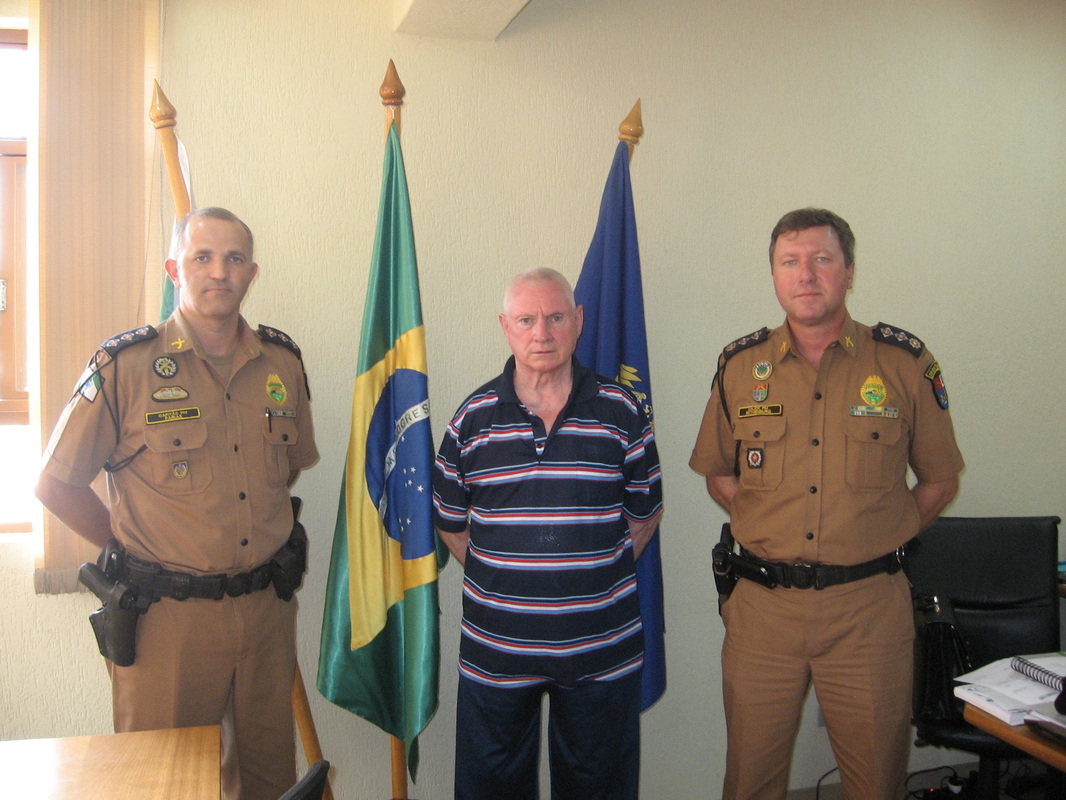|
The Brazilian police don’t have the best reputation when it comes to dealing with their public. Mostly because their way of doing so seems to involve a lot of firing tear gas and rubber bullets at peaceful protesters. Understandably, that's not an image Brazil's government is keen to maintain; hyper-violent police are pretty embarrassing, especially when the world's media is watching. So ahead of the World Cup – which Brazilian protesters weren't best pleased about – they decided to do something about it. Steve Costello, a 72-year-old grandfather of 11 from Bolton, has been teaching karate in Brazil for 20 years. In the mid-90s he was recruited to teach police non-violent suppression techniques, presumably so they could deal with threats without adding to their already massive civilian death toll. Ahead of the World Cup he was asked to give Sao Paulo's riot police a few lessons in his brand of karate. I gave him a call to see how that went. VICE: Hi Steve. So how did you get into training Brazilian riot police karate? Steve Costello: It first started in 1996. I was the first English instructor to do a karate course in Curitiba [a city about an hour from the coast]. I was teaching kids, but the chief of the riot police was present. He asked me to do a training session with the police forces, and after that I got invited over to Brazil on several occasions to train with the Command Operations Elite, the mounted police, firemen and the state cavalry troops. There were also a lot of training sessions organised with the military police in Curitiba and other cities. They even invited the riot police over from São Paolo to Curitiba to join the sessions. What was it they wanted to learn? I taught them the technique of Ryūkyū karate, which basically employs the use of pressure points, grabs and restraints when fighting against an armed opponent. It’s more about controlling and defusing a situation efficiently with minimum injuries on both sides, rather than turning to the use of lethal weapons. Is that so different to what they usually do? Ryūkyū karate is a combat style, but it’s based on street survival. The police commanders who saw my training liked the fact that it's less violent than other techniques. You give your opponent bruises, but you don’t seriously hurt them. During the year leading up to the World Cup I even taught the cavalry techniques of how to survive in close combat, in case they have to fight on the ground. When I was growing up in Manchester as a young boy I naturally got into fights with the Teddy Boys and the skinheads, which taught me to be streetwise. Did you use any weapons during the training? Yes. The police used a certain type of baton to defend themselves against knives – small pieces of wood that can be extended with a telescopic button. That sounds relatively peaceful compared to other techniques the Brazilian police have used to handle riots and protests before. Do you know why they decided to take a less violent route? They wanted to demonstrate to the public – especially during the World Cup – that they don’t have to use guns. The police have a pretty bad image from past riots that got out of control and ended up getting extremely violent, especially in the area around Rio de Janeiro. In 2011, a child even got shot. That created a very bad image – the opposite of what they wanted to show the world during the World Cup. What they learned from me were techniques of how to control a person who had a knife without being violent. I showed them how to disarm someone in a – as you put it – "peaceful way", rather than putting them into hospital. I had eight training sessions with different teams of up to 80 men for the World Cup alone last year. I always tell them, “The more you sweat in training, the less you bleed in combat.” I heard you were given an award for your services there.
Yes – from the commander of the riot police, Vladimir Rossini. It reads, “For the great contribution towards the goal set by the corps and further attempts to reach the ideals in common of the collaborators in the community of the city of Curitiba.” Wow. So do they want to keep using these techniques even after the World Cup finishes? Oh yes. I have more training planned with the police academy. They’re trying very hard to improve, and they’re all really competitive – in a friendly way. You need a certain mindset for karate, as well as the ability to focus, and they were all really good at that.
0 Comments
|
Sensei Steve Costello's news Archives
July 2014
Categories
All
|





 RSS Feed
RSS Feed
